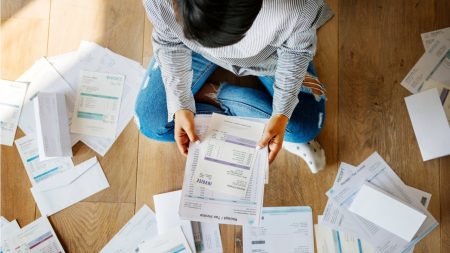Key takeaways
- An automatic stay prevents creditors from pursuing collections against you during bankruptcy.
- Both Chapter 7 and Chapter 13 bankruptcy have automatic stays that last anywhere from 30 days to five years.
- Several types of debts are included in an automatic stay, including protections against foreclosure, eviction, utilities, government benefits and most wage garnishment.
If you are considering bankruptcy, you are not alone. In 2023, nearly 435,000 Americans filed for bankruptcy, according to data from U.S. Courts. If you’re considering taking similar action, an automatic stay — also known as an injunction — can help you keep most creditors and lawsuits at bay.
When you file for bankruptcy, an automatic stay acts as an additional protection that prevents creditors from making collection efforts against you. But while an automatic stay limits what creditors can do, including halting foreclosure and preventing utilities from shutting off services for a time, they do have limitations.
What is an automatic stay?
An automatic stay is an injunction that goes into effect when you file for bankruptcy, preventing some creditors from continuing to pursue debt collection. For instance, if you’re past due on your mortgage or your car loan and you file for bankruptcy, lenders can’t foreclose on your home or repossess your car while the automatic stay is in place.
Both Chapter 7 and Chapter 13 cases — the two most common types of bankruptcies — have automatic stays. This allows you to work out your finances before creditors can attempt to collect on a debt.
What types of debts are included in an automatic stay?
Some bills and legal proceedings that are included in an automatic stay include:
- Foreclosure: An automatic stay stops foreclosure proceedings, allowing you to keep your home as long as your bankruptcy case is open.
- Some eviction: An automatic stay might give you temporary help, but in many cases, a landlord can continue with an eviction.
- Utilities: An automatic stay prevents your utilities from getting shut off for at least 20 days.
- Government benefits: If you receive government benefits — like Medicare, SNAP or unemployment benefits — and you were overpaid for any of them, the agency can usually collect that overpayment. An automatic stay stops this collection.
- Most wage garnishment: If you’ve filed for bankruptcy, an automatic stay will stop wage garnishment. Depending on the debt, it could get discharged in bankruptcy.
While an automatic stay stops the collection of many common debts, it doesn’t cover everything. For instance, any debts related to family court rulings must still be paid. This includes child support and spousal support. In other words, even when you file bankruptcy, you’re still responsible for keeping up with these obligations. Similarly, an automatic stay will not stop collection of any past due support.
In some cases, after filing bankruptcy, you may also find that your bank enforces an administrative freeze. This means the bank blocks you from withdrawing funds from your account and usually takes place after the bank becomes aware that you’ve filed bankruptcy.
How long does an automatic stay remain in effect?
An automatic stay is in effect as long as your bankruptcy is in effect. The type of bankruptcy will determine how long your stay is active. For Chapter 7, it’s usually a few months. For Chapter 13, it could be anywhere from three to five years.
However, if you’ve had another bankruptcy case dismissed in the past year, the automatic stay will only last 30 days. Having additional pending cases on your record may warrant no stay at all.
What happens if an automatic stay is violated?
In some cases, a creditor may ignore an automatic stay. Violating the stay has ramifications for the creditor. For instance, if the creditor willfully violated the stay and caused you financial injury, it is required to pay for any damages you experienced, including attorney fees and any other related expenses. A creditor may also be required to pay you punitive damages.
There are instances, however, when the creditor’s violation is accidental. To help ensure the creditor understands there is a stay in place, you can provide the information about your bankruptcy — your case number, filing date and court — to verify your bankruptcy filing. If the creditor continues to violate the stay, you may be able to take legal action.
What happens after an automatic stay is lifted?
Since an automatic stay keeps most debt collectors and lawsuits away from you, lifting a stay or closing a bankruptcy case means that they can reach out again.
Creditors and debt collectors can also file a motion to remove or lift the stay before the bankruptcy case is closed. If the creditor can prove that an automatic stay hurts its business — for instance, if your creditor can show that it is losing money — the court may grant a request to lift the automatic stay. However, this is usually done on a case-by-case basis, and not all courts approve lifting an automatic stay.
Bottom line
An automatic stay prevents some creditors from continuing to pursue debt collection efforts. Depending on whether you file Chapter 7 or Chapter 13 bankruptcy, that protection can last from 30 days to as long as five years.
Though often a last resort, filing bankruptcy can give you a chance to start over. Use the time an automatic stay provides to reorganize your finances and help yourself bounce back by building your credit.
Read the full article here











